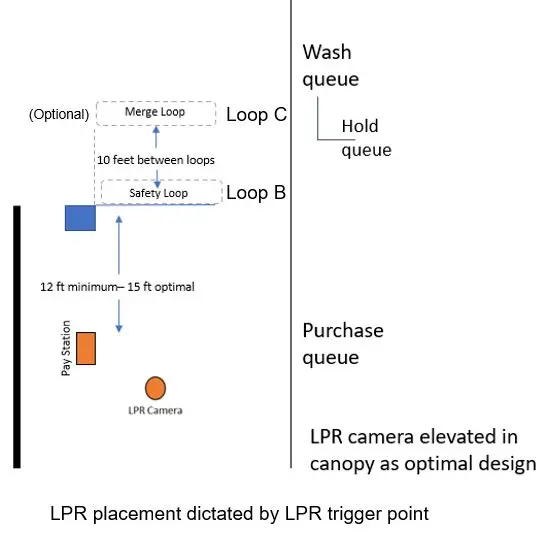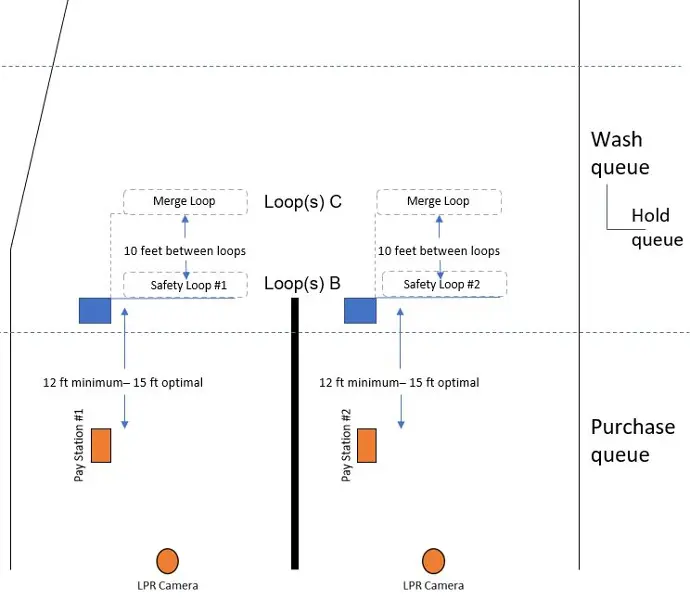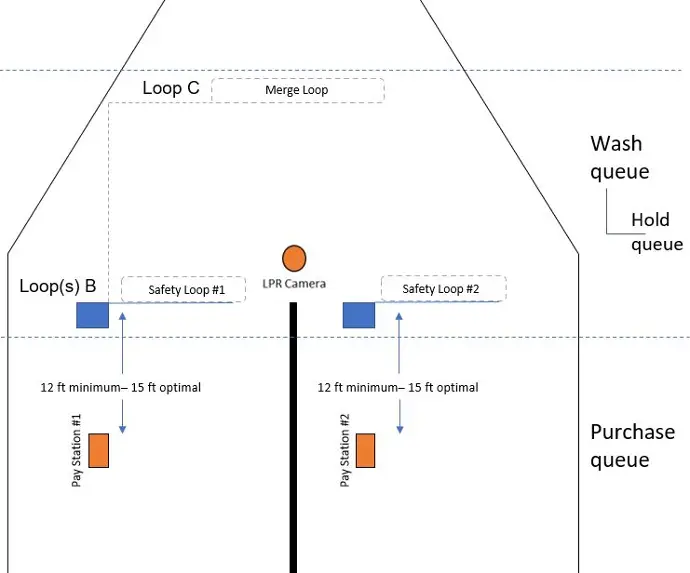Equipment Placement
Tunnel Layouts
Scenario A – Single-lane, merge loop optional

Notes:
1) I/O Interface to tunnel controller is relay based.
2) Dencar manages gate control.
3) Dencar to manage queues from pay station to merge loop to “send”.
4) LPR camera signaled (take picture) via the safety or merge loop.
Equipment:
-There is a pay station controller inside the pay station and a single Lane Manager (queue/gate) Controller, typically installed in the network or control room.
- Communication between the pay station and Lane Manager Controller is network signaled.
-Communication between gate and Lane Manager is network signaled.
-The Lane Manager Controller interfaces to Tunnel Controller (provided by others) via a Sealevel I/O device via relay signaling.
Scenario B – Multi-lane, individual merge loops

Notes:
1) I/O Interface to tunnel controller is relay based.
2) Dencar manages gate control.
3) Dencar to manage queues from pay stations to merge loops to “send”.
4) LPR camera signaled (take picture) via the safety or merge loop.
5) This design supports up to 5 lanes.
Equipment:
-There is a pay station controller inside each pay station and a single Lane Manager (queue/gate) Controller, typically installed in the network or control room.
- Communication between the pay stations and Lane Manager Controller is network signaled.
-Communication between gates and Lane Manager is network signaled.
-The Lane Manager Controller interfaces to Tunnel Controller (provided by others) via a Sealevel I/O device via relay signaling.
Scenario C – Multi-lane, single merge loop 
Notes:
1) I/O Interface to tunnel controller is relay based.
2) Dencar manages gate control.
3) Dencar to manage queues from pay stations to merge loop to “send”.
4) LPR camera signaled (take picture) via the merge loop.
5) This design supports up to 5 lanes.
Equipment:
-There is a pay station controller inside each pay station and a single Lane Manager (queue/gate) Controller, typically installed in the network or control room.
- Communication between the pay stations and Lane Manager Controller is network signaled.
-Communication between gates and Lane Manager is network signaled.
-The Lane Manager Controller interfaces to Tunnel Controller (provided by others) via a Sealevel I/O device via relay signaling.
General Commentary:
Dencar equipment is network signaled, whereas legacy equipment is frequently signaled via control wiring. Plan for the appropriate network and power runs during installation of the equipment.
The Lane Manager is a LINUX based computer. It hosts the Visual Queue interface that you will access as an operator via a webpage. Any browser based device can access the visual queue. You could have a dedicated computer and touch screen, an iPad or rugged tablet, or even your phone accessing the visual queue. Additionally, or alternatively, you can plug a monitor and mouse directly into the Lane Manager. This means your visual queue is simultaneously accessible to multiple team members from multiple devices and is even accessible remotely over a secure virtual private network (VPN) connection.